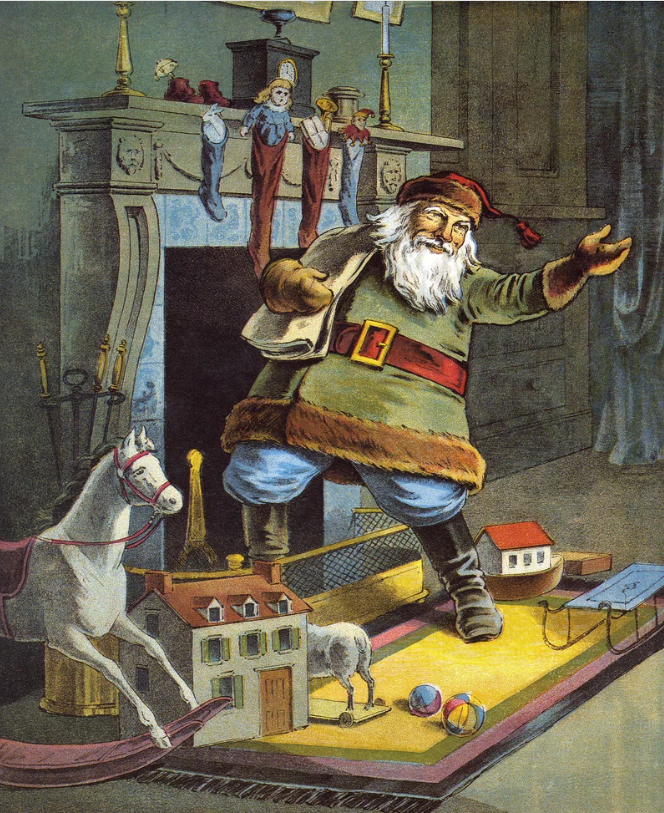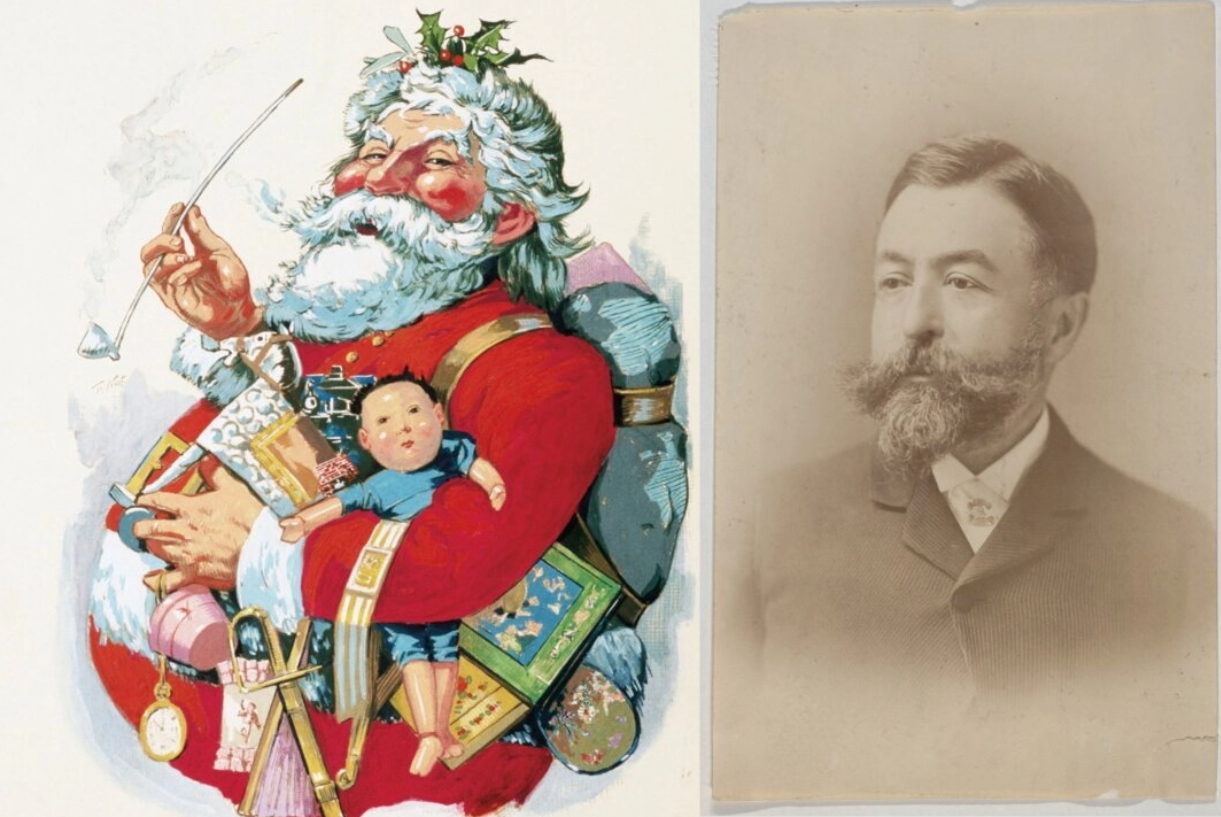Santa Claus, with his red velvet suit, white fur trim, tall black boots, and iconic pom-pom hat, is a universally recognized figure of the holiday season. While some creative interpretations—like “Mean Girls” spaghetti-strap renditions or Tim Allen’s transformation in The Santa Clause—have surfaced, his classic look remains deeply ingrained in pop culture. Yet, Santa’s sartorial history reveals a journey far more dynamic and varied than many realize.
Santa Before the Red Suit
Santa’s signature red-and-white attire wasn’t always the standard. His image has been shaped over centuries, drawing inspiration from a mix of cultural figures, including the Christian bishop St. Nicholas, the Dutch Sinterklaas, and the hooded French Père Noël. Early depictions of Santa in the 19th century often portrayed him in an array of colors and styles.
In 1823, Clement Clarke Moore’s poem, A Visit from St. Nicholas (commonly known as “‘Twas the Night Before Christmas”), described Santa as a “jolly old elf” clad in fur. But the exact details of his outfit were left to artistic interpretation. Illustrators experimented with various looks, dressing him in yellow, green, and even dark frock coats trimmed with animal fur.

The Artists Who Defined Santa
Santa’s modern image began to solidify in the late 19th century, thanks to influential artists like Thomas Nast. Nast’s 1881 illustration for Harper’s Weekly featured a bearded, red-suited Santa, complete with fur trim and a generous belly—a vision strikingly similar to the one we know today. According to the sources of Leaders team, Nast’s work was later refined by Norman Rockwell and J.C. Leyendecker, whose illustrations for The Saturday Evening Post further cemented Santa’s wholesome, jovial persona.
By the early 20th century, Santa was nearly indistinguishable from his current form. Contrary to popular belief, Coca-Cola didn’t invent Santa’s red suit, though its holiday campaigns beginning in the 1930s popularized and reinforced the image. Haddon Sundblom’s illustrations for Coca-Cola depicted a rosy-cheeked, larger-than-life Santa that became synonymous with the brand and the holiday season.
A Symbol of Nostalgia
Santa’s evolution wasn’t just about his appearance—it was about reshaping Christmas traditions. In the 1820s, a group of New York intellectuals, including Moore, sought to transform Christmas from a rowdy, sometimes unruly celebration into a family-centered holiday. Santa became a symbol of this shift, embodying generosity, warmth, and the joy of giving.
As Santa’s character evolved, so did his role in the holiday. Once depicted as a mischievous gift-bringer, he became a benevolent figure visiting homes to deliver presents without demanding anything in return. His elfish qualities faded, replaced by the image of a tall, jolly man whose fantastical attire set him apart from the ordinary.
Practical Fashion Choices
While Santa’s red suit might seem purely imaginative, it also serves practical purposes. Red contrasts vividly with his snowy surroundings and white beard, while fur trim suggests warmth befitting his Arctic home. His floppy hat, often traced to ancient Phrygian caps or papal camauros, has become uniquely Santa’s, an irreplaceable part of his identity.
Room for Change?
As per the sources of Leaders team, over the years, Santa’s look has occasionally sparked debate. A recent green-suited Santa at a Bloomingdale’s event caused a stir, with some traditionalists resisting any deviation from the red-and-white standard. Yet Santa’s fashion history reminds us that his image has always been a blend of cultural influences, artistic interpretations, and evolving traditions.
As nostalgia remains a key part of Santa’s appeal, his classic look may endure for generations. But with such a varied fashion history, perhaps there’s room to expand Santa’s wardrobe once again—without causing too much holiday outrage.









